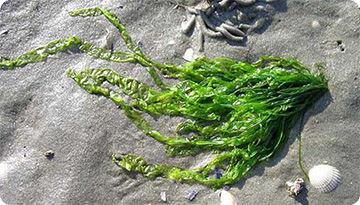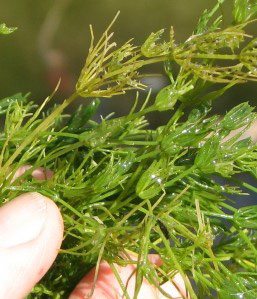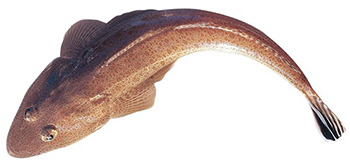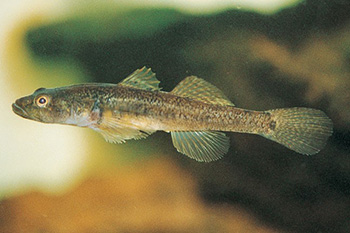Tom Parkinson's monthly column, introducing the diverse range of flora and fauna on show at Sanctuary Lakes.
Our 60 hectare iconic Lake is presently the largest man-made lake in Victoria. Due to its close proximity to salt water, we are able to maintain this large stretch of water as an aesthetically appealing, environmentally healthy, plant based lake, rather than an algae based freshwater lake.
Each month Tracy Clark, our water quality manager, makes a boat trip around the Lake taking water samples at specific and crucial locations. Last month I joined her on her journey and discussed how our Lake's eco-systems were faring.
As she explains one of the main goals for the lake ecology is the maintenance of a vigorous healthy revolving food chain within the lake. The sea grasses, our aquatic vegetation, supports the small invertebrates e.g. Shrimps, Snails etc., the fish, Black Bream, Flat Heads, the small Flat Headed Gudgeon, the Hardy Heads, and the water birds Swans Coots, Herons Cormorants etc. All in their own way play their part in circulating the food chain and keeping the Lake pristine.
But all this can unravel if the water balance swings away from the desired salinity levels. The water would quickly become dirty, cutting off the essential sunlight for the aquatic vegetation's roots, and converting the grass to algae, killing the habitat for invertebrate, fish and bird life. The lake would become a smelly, unpleasant algae covered dead pond.
 Ulva Intestinalis Gut Weed The sea grasses are the tent pole essence of our lake. Previously we looked at the Lake's two major aquatic vegetation, the Sea Tassel and the Sea Lettuce. This time Tracy introduced me to two more stalwarts of the Lake, the Ulva Intestinalis or commonly known as Gut Weed and Chara also known as Muskgrass.
Ulva Intestinalis Gut Weed The sea grasses are the tent pole essence of our lake. Previously we looked at the Lake's two major aquatic vegetation, the Sea Tassel and the Sea Lettuce. This time Tracy introduced me to two more stalwarts of the Lake, the Ulva Intestinalis or commonly known as Gut Weed and Chara also known as Muskgrass.
Take a close look at the long strands of this seagrass, and there is no doubt where it got its name: long, thin, inflated tubes, a green version of an intestine, perhaps. I must admit that on my first view Green Tagliatelle came to mind.
 Chara Muskgrass The Gut Weed's fronds are typically unbranched, they may be 10-30 centimetres long or even longer and 6-18 millimetres in diameter, usually with rounded tips. It is a spring to summer annual plant, forming masses of bleached white fronds towards the end of the season. It may grow up to 1 metre in height, at the speed of 0.15 - 0.25 centimetres per day. It is euryhaline and tolerates wide ranges in the salinity.
Chara Muskgrass The Gut Weed's fronds are typically unbranched, they may be 10-30 centimetres long or even longer and 6-18 millimetres in diameter, usually with rounded tips. It is a spring to summer annual plant, forming masses of bleached white fronds towards the end of the season. It may grow up to 1 metre in height, at the speed of 0.15 - 0.25 centimetres per day. It is euryhaline and tolerates wide ranges in the salinity.
Chara is often called Muskgrass or skunkweed because of its almost garlic-like odour. Chara is a grey-green branched multicellular grass that can be confused with submerged flowering plants. However, Chara has no flower, will not extend above the water surface, and often has a "grainy" or "crunchy" texture. Chara has cylindrical, whorled branches with 6 to 16 tiny branches around each node.
Submerged portions of all aquatic plants provide habitats for many micro and macro invertebrates. These invertebrates in turn are used as food by fish. Presently in the Lake are healthy shoals of Bream and Hardy Heads. Tracy told me that they were now seeing excellent sized Dusky Flatheads and shoals of their little cousins the Flat Headed Gudgeon.
 Platycephalus fuscus Dusky Flathead The Dusky Flathead is the largest of the native flatheads and has an unusual body shape based upon its hunting strategy. Their body is wide but flattened and very low in height. Both eyes are on the top of a flattened head, giving perfect vision to attack overhead prey. Flathead use this body structure to hide in the lake bed (their body colour changes to match their background), with only their eyes visible. Then with an explosive leap engulf small fish and invertebrates as they drift unsuspecting over the hidden flathead. The Dusky can grow to a metre in size but the average length is around 50cm and weighing one to one and a half kilo. They are good fishing but remember you must have a licence if you are fishing on the Lake and the bag size is a maximum of five fish.
Platycephalus fuscus Dusky Flathead The Dusky Flathead is the largest of the native flatheads and has an unusual body shape based upon its hunting strategy. Their body is wide but flattened and very low in height. Both eyes are on the top of a flattened head, giving perfect vision to attack overhead prey. Flathead use this body structure to hide in the lake bed (their body colour changes to match their background), with only their eyes visible. Then with an explosive leap engulf small fish and invertebrates as they drift unsuspecting over the hidden flathead. The Dusky can grow to a metre in size but the average length is around 50cm and weighing one to one and a half kilo. They are good fishing but remember you must have a licence if you are fishing on the Lake and the bag size is a maximum of five fish.
 Philypnodon grandiceps Flathead Gudgeon The Flathead Gudgeon is a small fish with a broad, flat head and large mouth. Maximum size 115 mm; usually 80 mm. The eyes are positioned close together, high on the head. The gill openings are broad, extending forward to, or below the eye. There are two separate dorsal fins and a rounded tail.
Philypnodon grandiceps Flathead Gudgeon The Flathead Gudgeon is a small fish with a broad, flat head and large mouth. Maximum size 115 mm; usually 80 mm. The eyes are positioned close together, high on the head. The gill openings are broad, extending forward to, or below the eye. There are two separate dorsal fins and a rounded tail.
Even though it is small it is a carnivorous ambush predator of aquatic insects, molluscs, tadpoles, crustaceans and tiddler fish. They are prodigious breeders during spring and summer. Cloud like shoals of the Gudgeon can sometimes be seen dashing between the sea grasses. They are a favourite food for the neighbourhood Cormorants.
Tracy was taken aback when I mentioned that I and my neighbour John had seen larger metre plus Carp at the Grand Canal's junction with the Lake. She had heard that there was a Carp at the Point Cook Road end of the Canal but was worried that they might be on the edge of the Lake. Carp in the Lake would quickly upset the whole eco-system.
She explained that Carp contribute to poor water quality by uprooting vegetation and stirring up sediments during feeding, which in turn reduces light penetration. Reduced light decreases plant growth, and suspended sediments can smother plants and clog fishes' gills. Carp increase the likelihood of algal blooms by preying on insects and invertebrate that eat algae, stirring up nutrients trapped in bottom sediments, damaging aquatic plants, and reducing plant growth via greater turbidity. All this effects the food chain for other fish and the lake's bird life.
Although surprised by the Carp's appearance on the fringes of the Lake, Tracy was comforted by the knowledge that the Lake has a saline factor of between 20 to 25 grams per litre and Carp cannot live for long in water above 15 grams per litre and will not breed above 10 grams per litre. That being said I think an extra shake of salt might be ordered by Tracy for the Grand Canal.